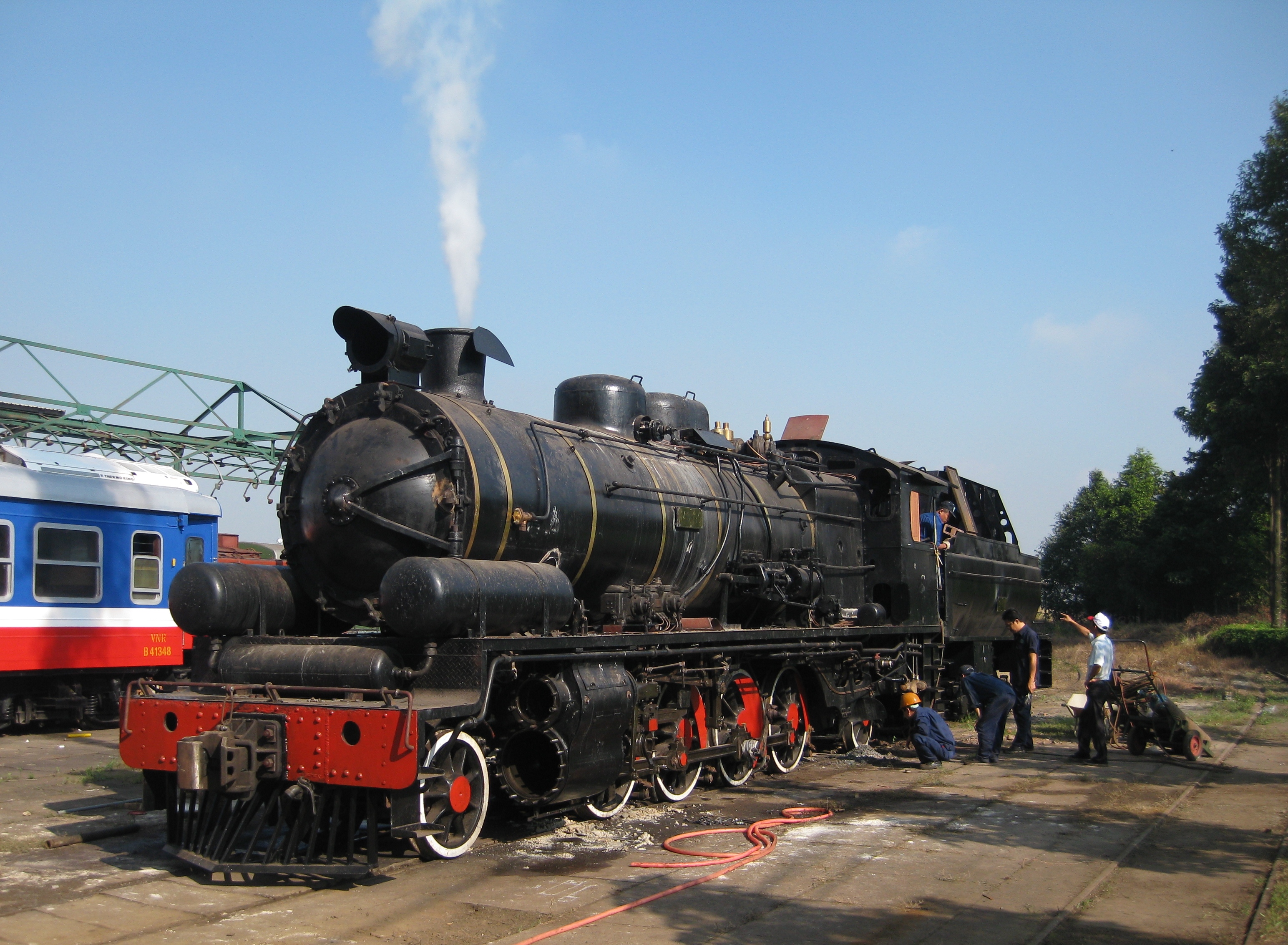A team of engineers and workers in the southern province of Binh Duong late last month completed their lengthy, painstaking restoration of a steam locomotive which will soon be tapped into for tourism.
An unusual, resonant whistle broke the silence in the province’s Di An District on the night of October 31, signaling a revival.
The Tu Luc 141-190 steam locomotive, which was parked on Railway No. 2 of the Di An Train Co., was bellowing and belching its first columns of smoke almost 30 years after its “death.”
Some 20 engineers and workers were elated, seeing their eight-month collective effort was finally “alive.”
From scrap to working locomotive
Nguyen Van Hien, 68, the restoration project’s chief engineer, emotionally recalled that after 1975, steam trains operated mainly in the northern region.
“The trains were removed from long routes starting in 1996, and were occasionally used to carry tourists when demanded and ran within the station, before service was suspended altogether in 2003. It’s been ages since I last heard its whistle,” he added.
The Tu Luc 141-190 locomotive, which was produced in China in 1966, is fueled by coal. The locomotive produces its pulling power through a steam engine.
The locomotive operated on the Ha Noi- Hai Phong routes in the north.
According to Hien, who knew the locomotive from its very first day in Vietnam, the engine has a boiler volume of four cubic meters.
It pulls a tender which is capable of carrying 10 tons of coal and 16 cubic meters of water. This water volume is enough to pull 20 passenger wagons for 50 kilometers.
After steam locomotives were replaced by their diesel successors in 1996, the Tu Luc 141-190 locomotive was shelved at a locomotive firm in Hanoi and was soon broken down into a huge heap of scrap.
As Vietnam planned to restore steam locomotives for tourism in 2009, the locomotive and two others were purchased by Indochina Rail Co., a local railway tourism company based in Ho Chi Minh City.
The company initially inked a deal with state-run Gia Lam Rail Firm in Hanoi.
However, after the Tu Luc 141-190 locomotive was dismantled, the restoration project ground to a halt.
The project resumed in late 2010, with the locomotive’s components being transported to Di An Train Co. in Binh Duong for reconstruction.
Pham Hong Phi, director of Di An Train Co., said his company was short on engineers and workers who specialized in steam locomotives.
The restoration project didn’t resume until February 2014.
The painstaking restoration process
Phi said that his engineers and workers faced immense difficulty as many parts had gone missing during transport, while others were seriously rusted and unusable.
They even borrowed certain components, such as the pumping system, from the iconic steam locomotive which is currently on display in Da Lat, in the Central Highlands’ Lam Dong Province.
“Though original parts account for less than 80% of the finished product, the locomotive has returned to its complete original from,” Phi said proudly.
The legacy goes on
Hien, the project’s chief engineer, who majored in steam locomotives, retired several years ago.
However, he never lost hope that he would hear the beloved whistle from a steam engine again.
“Even after retiring, my house is still packed with materials on steam engines, which I intend to be a legacy to pass on to my children. My dream finally came true when I joined the steam locomotive’s restoration project,” Hien shared.
Several foreign experts were summoned for the project, but all declined to take part, as most of them specialize in specific parts, not the overall locomotive.
Hien then drew on his 30 years of experience in working with steam engines and instructed the young engineers to bring the engine back to life.
Tran Dinh Hung, who was trusted with overseeing the project, was one of the men who escorted the eight cogwheel locomotives from Da Lat to Europe in 1990.
He was also invited to coordinate tourism steam engine services in Switzerland for several years.
“My father was a cogwheel train driver on the Da Lat- Phan Rang route in the central region. I worked in the railway industry for many years. It’s so great that I could help bring back the steam locomotive, so that future generations can witness the remnant of a historically significant technology, which is also associated with a period of the country’s history,” Hung shared.
Not far from where the locomotive was parked sit the components of another steam locomotive, which was also transported from Hanoi for assembly and restoration.
“If the investor needs it urgently, another steam locomotive will soon be back in action,” Phi said.
According to Hoang Quoc Hoi, CEO of Indochina Rail Co., his company has decided to run the Tu Luc 141-190 steam locomotive first for tours on the Da Nang - Hue railway route.
“As paperwork to launch the tour is underway, we are also restoring the locomotive’s wagons and reviving the two other steam locomotives,” he said.





















































